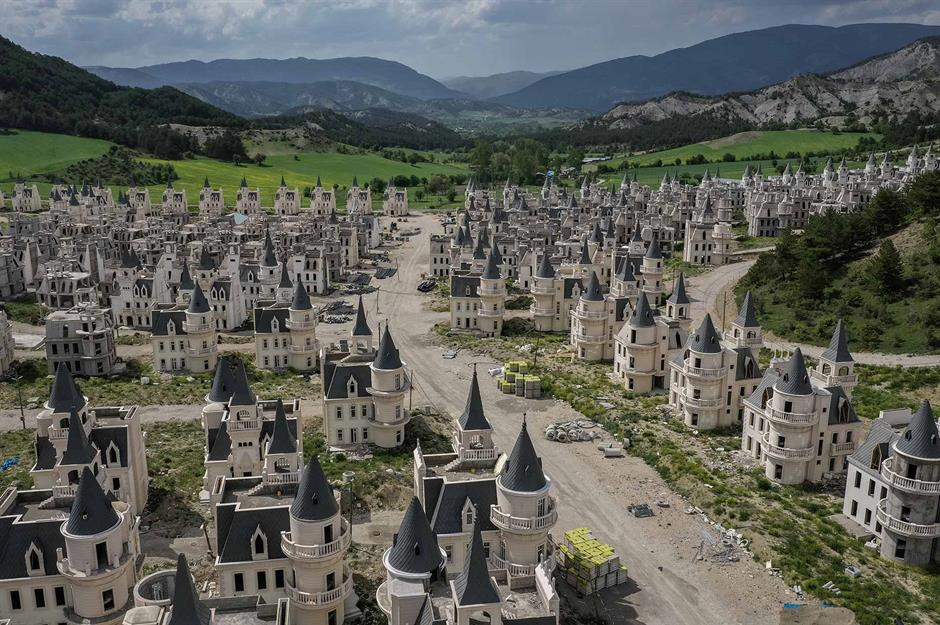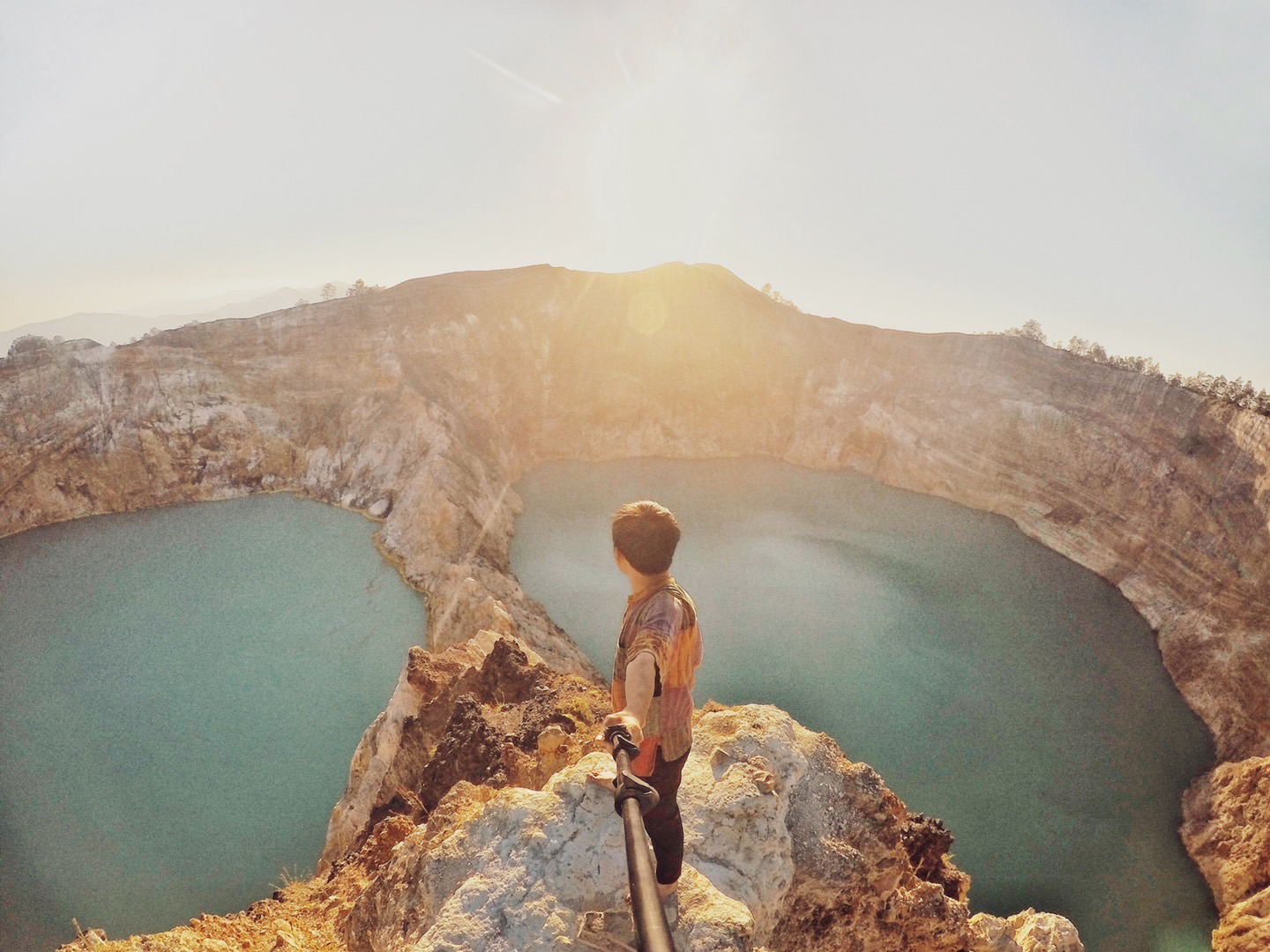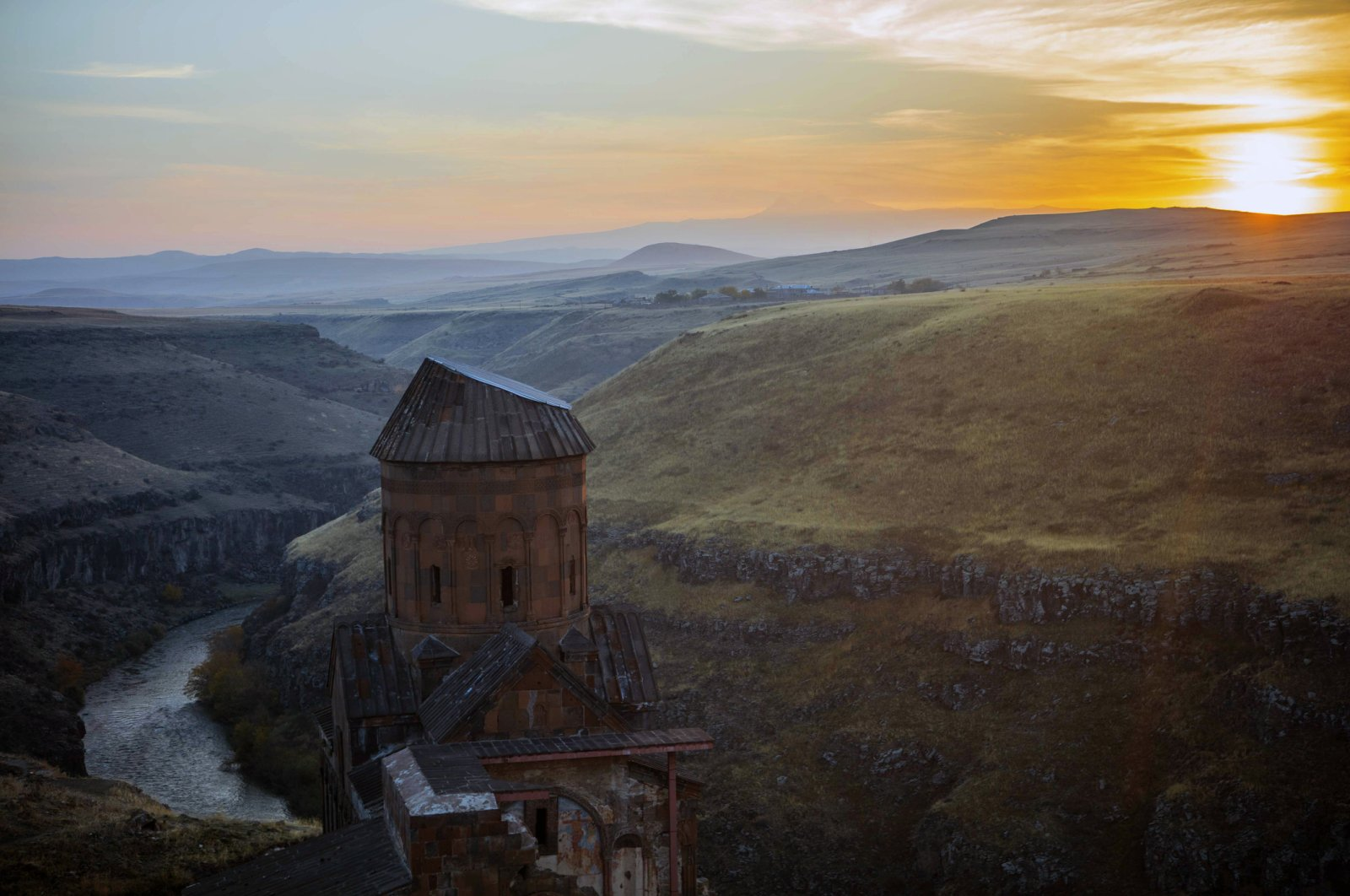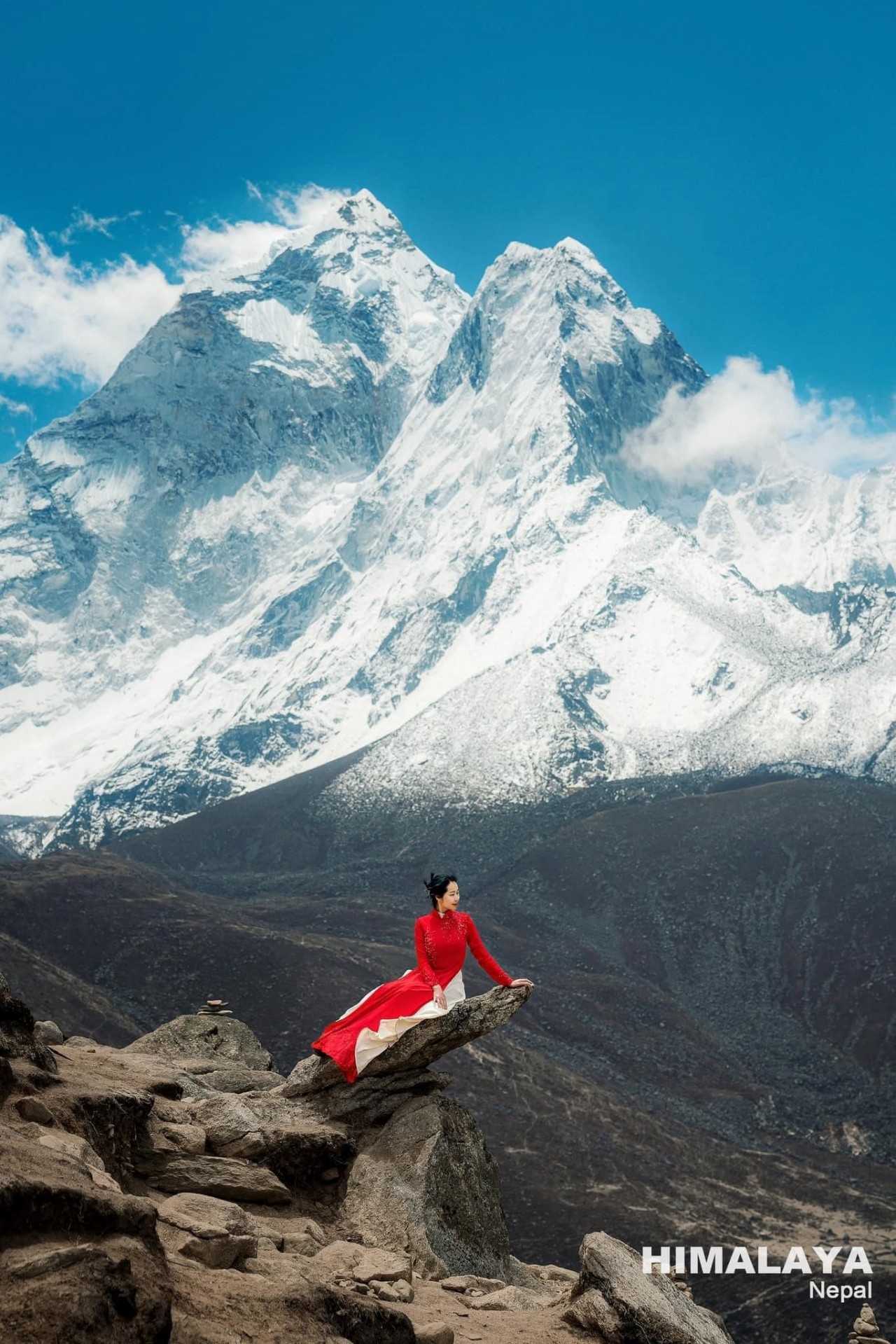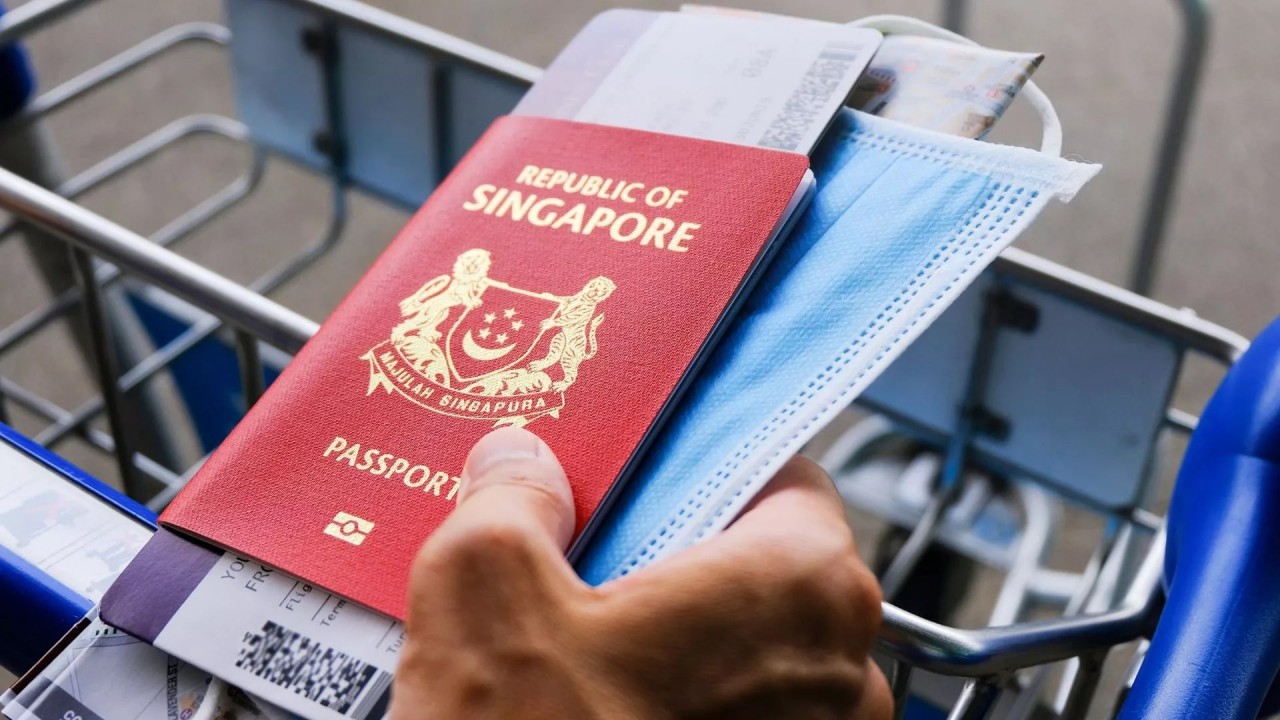Strange Daily Life in Belize - The Community That "Froze In Time"
| Mysterious Story of Turkey's Old Ghost Town With Abandoned Fairytale Castles | |
| Vietnamese Man Travels to 30 Countries - Video | |
| Ani - The Forgotten Ghost City That Was Once The 'City of 1,001 Churches' |
Homesteads dotting a pastoral landscape, families living by lamplight and men in straw hats riding horse-drawn carriages -- the scenes in Jake Michaels' photographs could easily depict bygone times in the American Midwest. But not only do his pictures hail from the digital age, they were taken hundreds of miles away in Belize.
The tiny Central American country is home to around 12,000 of the world's most conservative Mennonites, a group of Christians that live in closed communities and shun modern technology including, in some cases, electricity. Dating back to 16th-century Europe, the Protestant sect's members have since moved around the world in search of isolated farmland, and to escape persecution or attempts to integrate them into wider society.
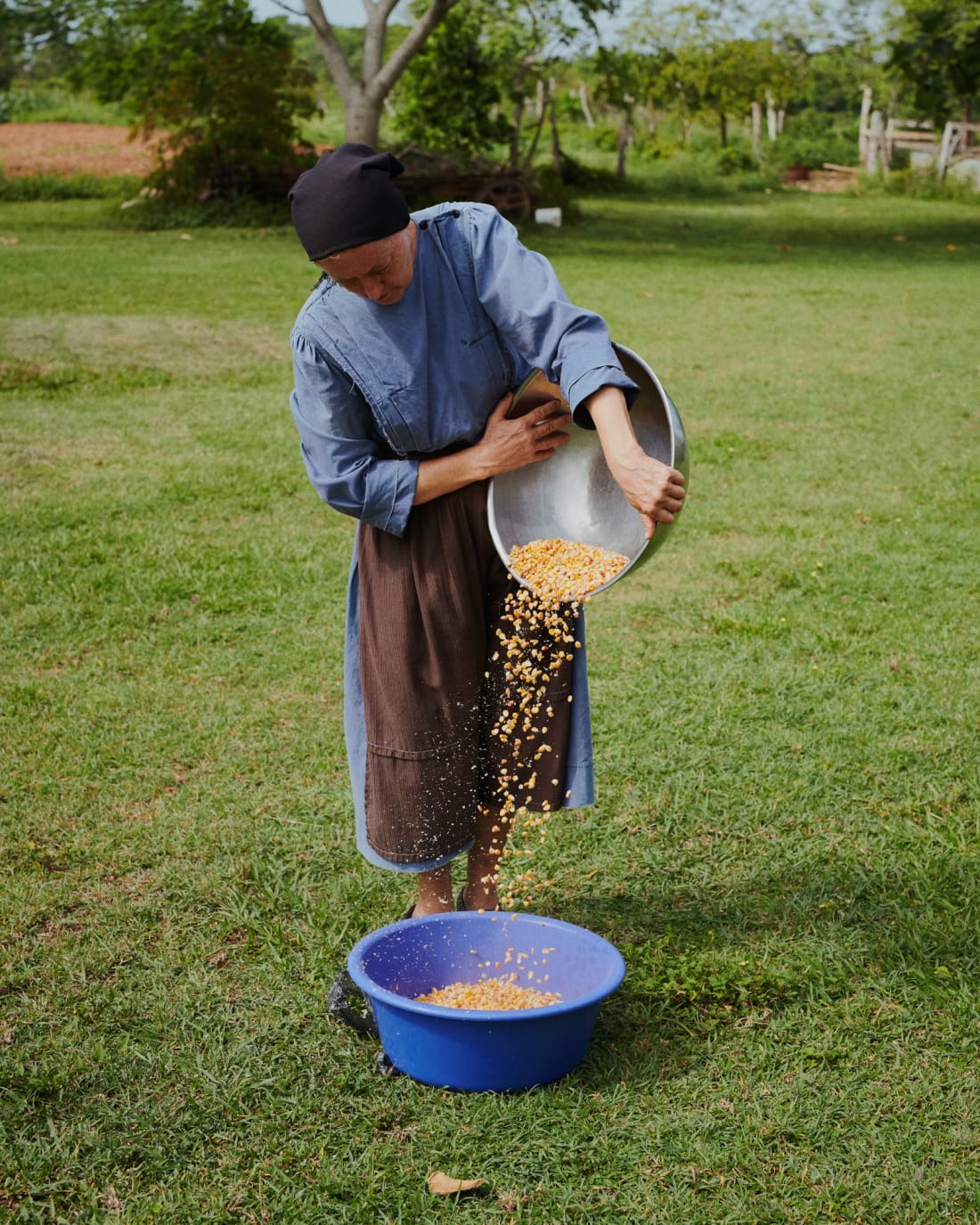 |
| Mennonites colonies are an important source of agricultural produce in Belize.Jake Michaels/Courtesy Setanta Books |
Belize's colonies date back to the late 1950s, when a group of over 3,000 Canadian Mennonites immigrated there from Mexico. Their arrival followed an agreement with the Belizean government, which offered them land, religious freedom and exemption from certain taxes (and, as committed pacifists, from military service).
Belize is often thought of as a Caribbean country in Central America because it has a history similar to that of English-speaking Caribbean nations. Indeed, Belize’s institutions and official language reflect its history as a British colony. However, its culture is more typical of that of other Central American countries. Belize’s small population is ethnically diverse and includes a large proportion of immigrants. Since the 1970s, migration has shifted Belize’s ethnic composition from a predominantly Creole (mixed African and British descent) population to one in which mestizos (in Belize, people of mixed Mayan and Spanish ancestry) make up half of the total inhabitants. Belize has one of the most stable and democratic political systems in Central America. After its original capital, Belize City, was ravaged by a hurricane in 1961, a new capital, Belmopan, was built inland, about 50 miles (80 km) west of Belize City, which remains the country’s commercial and cultural centre as well as its most populous city.
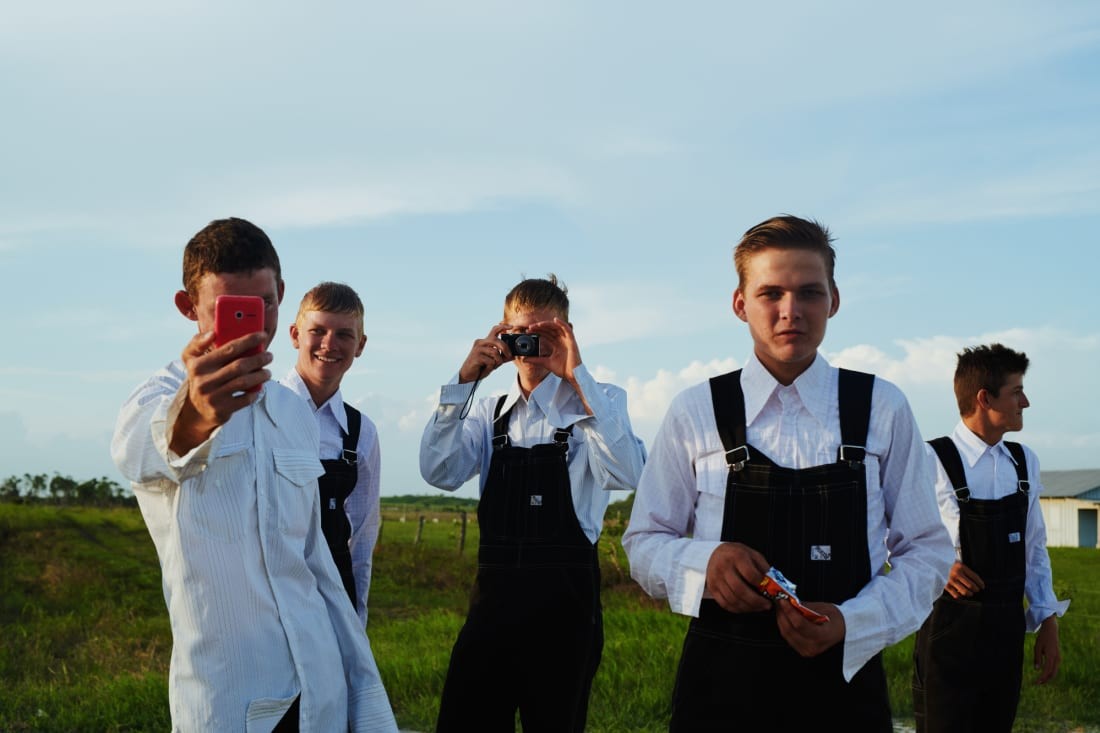 |
| Belize's Mennonites largely shun modern technology, though some young people now have phones and cameras. Scroll through to see more of photographer Jake Michaels' images of the secluded colonies.Jake Michaels/Courtesy Setanta Books |
The name Belize is traditionally believed to have been derived from the Spanish pronunciation of the last name of Peter Wallace, a Scottish buccaneer who may have begun a settlement at the mouth of the Belize River about 1638. It is also possible that the name evolved from the Mayan word belix (“muddy water”) or belikin (“land facing the sea”).
Situated south of the Yucatán Peninsula, Belize is a land of mountains, swamps, and tropical jungle. It is bounded by Mexico to the north, Guatemala to the west and south, and the Caribbean Sea to the east. The country has a 174-mile (280-km) coastline.
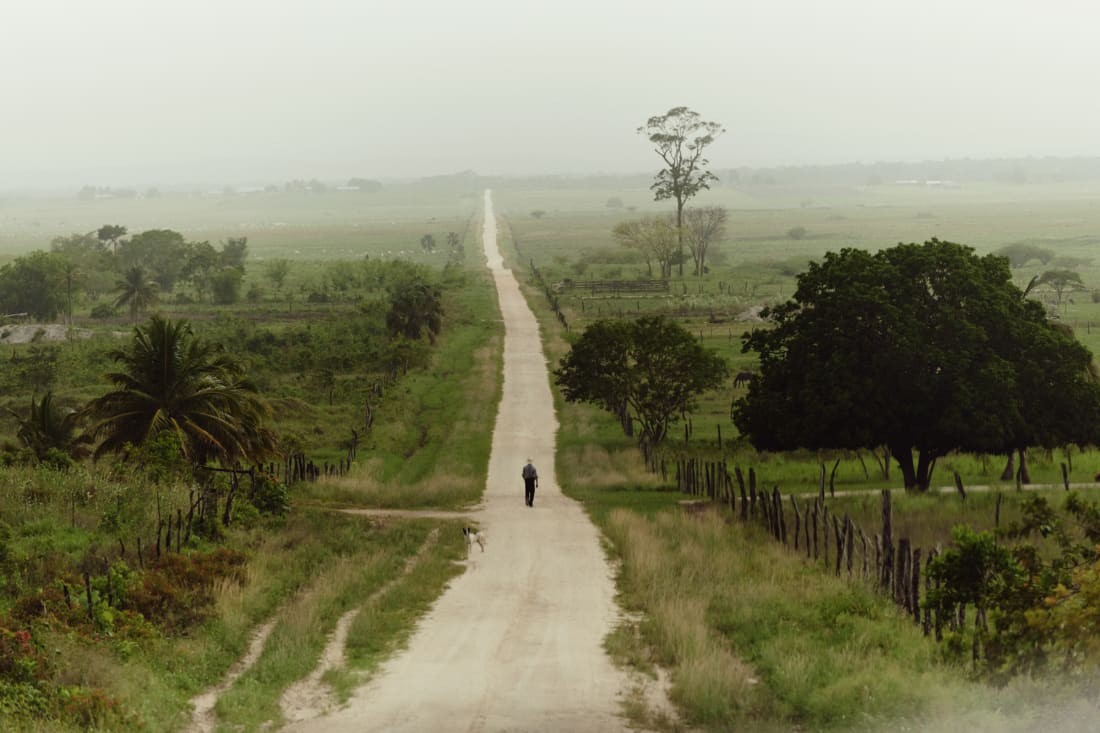 |
| Jake Michaels/Courtesy Setanta Books |
The southern half of the country is dominated by the rugged Maya Mountains, a plateau of igneous rock cut by erosion into hills and valleys that stretch in a southwesterly to northeasterly direction. The Cockscomb Range, a spur of the Maya Mountains, runs toward the sea and rises to Doyle’s Delight. The northern half of the country consists of limestone lowlands and swamps less than 200 feet (60 metres) above sea level.
Belize has a subtropical climate, with a well-marked dry season from late February to May and a wet season from June to November that is interrupted from August to September by another dry season. The mean temperature in Belize City is about 74 °F (23 °C) in December and 84 °F (29 °C) in July. The mean annual rainfall increases sharply from about 50 inches (1,270 mm) at Corozal on the northern frontier to 175 inches (4,445 mm) at Punta Gorda in the south, while at Belize City rainfall amounts to about 75 inches (1,900 mm). There are, however, considerable yearly variations throughout the country. Trade winds blow onshore most of the year, and from September to December northerly winds bring cooler, drier air. Hurricanes (tropical cyclones) are a threat from July through November. A hurricane in 2000 devastated the country’s infrastructure and displaced tens of thousands of Belizeans.
About three-fifths of Belize is forested. There are at least 50 different forest tree species, including mahogany, Santa Maria (Calophyllum brasiliense), cedar, and ironwood. In the north, limestone soils support deciduous forests, and sapodilla and mahogany predominate. In the south, the forest is taller and is evergreen. Santa Maria, rather than mahogany, flourishes on the plateau, and oak and pine grow on some of the plateau ridges. The rivers are largely bordered by swamp forests. On the southern coastal plain and inland from Belize City, open savanna (grassland) is marked by scattered oaks, pines, and palmetto palms. The coast is fringed with mangrove trees. The highlands are mostly forested and are largely uninhabited.
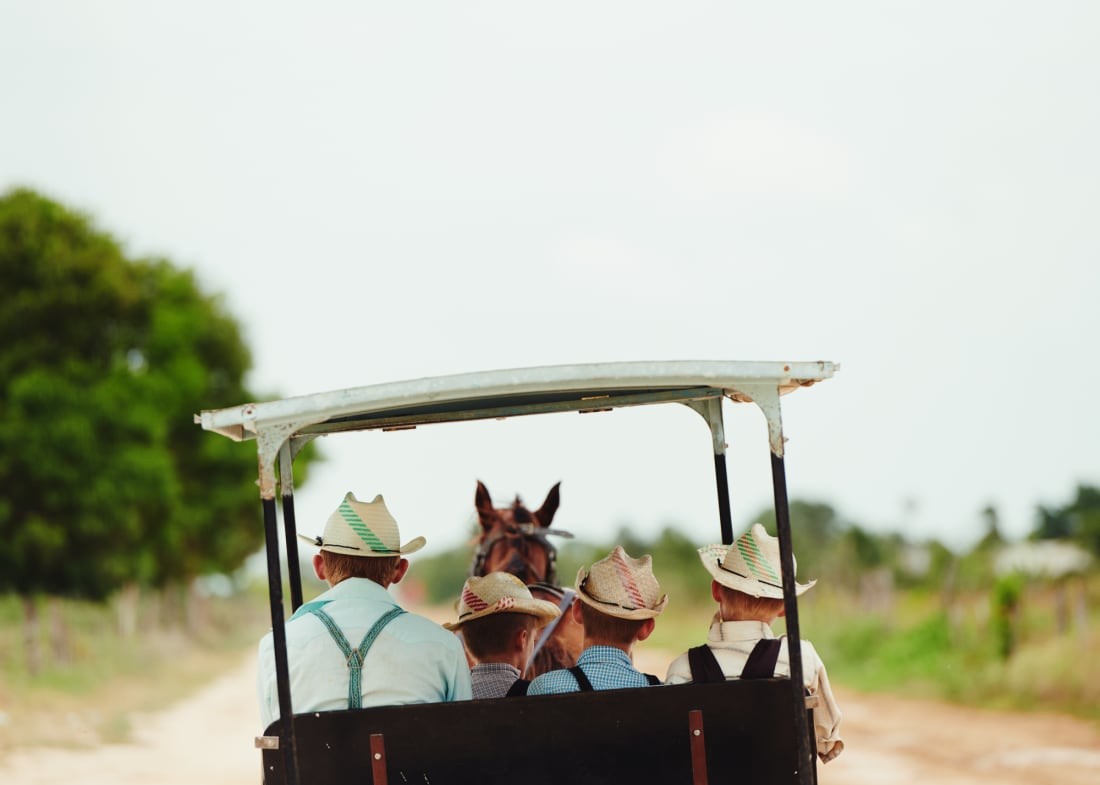 |
| Belize's Mennonites still travel by horse and cart. Photo: Jake Michaels/Courtesy Setanta Books |
The community that "stuck in time"
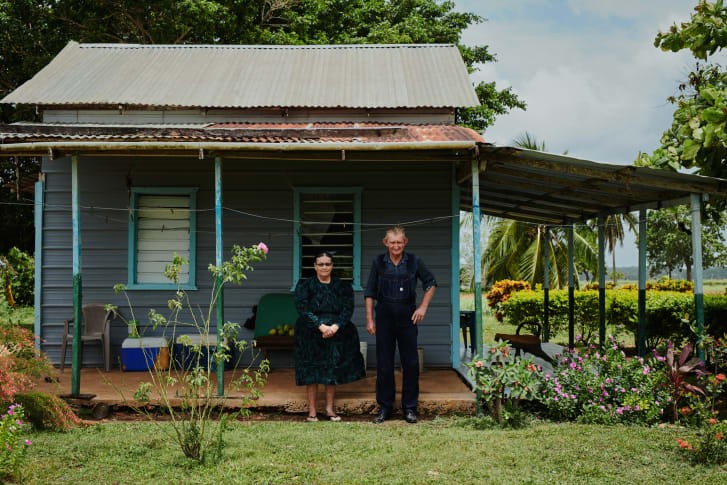 |
| A husband and wife stand outside their home, with only the lush vegetation hinting at the photo's surprising location: Belize. Credit: Jake Michaels/Courtesy Setanta Books |
The tiny Central American country is home to around 12,000 of the world's most conservative Mennonites, a group of Christians that live in closed communities and shun modern technology including, in some cases, electricity. Dating back to 16th-century Europe, the Protestant sect's members have since moved around the world in search of isolated farmland, and to escape persecution or attempts to integrate them into wider society.
Belize's colonies date back to the late 1950s, when a group of over 3,000 Canadian Mennonites immigrated there from Mexico. Their arrival followed an agreement with the Belizean government, which offered them land, religious freedom and exemption from certain taxes (and, as committed pacifists, from military service).
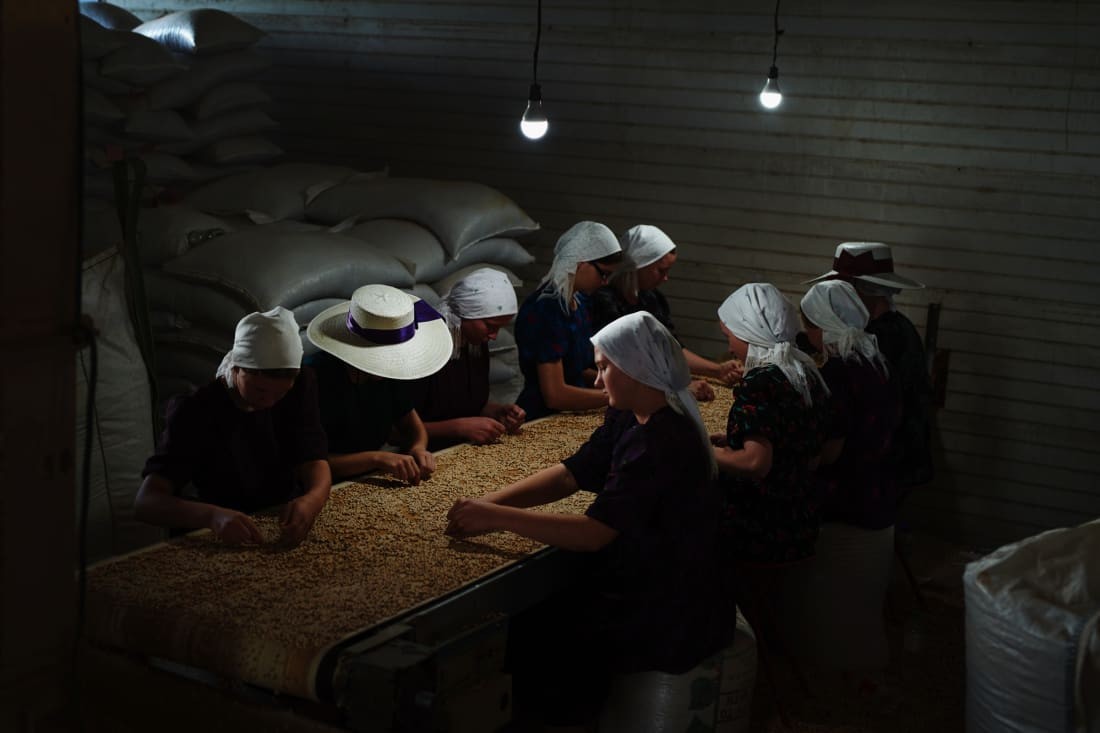 |
| Mennonites, pictured here sorting beans, rely on commercial agriculture, despite their isolation from wider Belizean society. Jake Michaels/Courtesy Setanta Books |
In return, the country has enjoyed the fruits of their agriculture. Today, Mennonites dominate Belize's domestic poultry and dairy markets, despite representing less 4% of the population.
Spending time in Mennonites' family homes and expansive farmland, Michaels discovered a world frozen in time (an idea alluded to by the title of his new book, "c.1950"). But beyond the obvious anachronisms of technology-free homes and women dressed in bonnets, the resulting photographs hint at an idyllic life centered on family -- and free from the trappings of modernity.
"My whole practice shifted as the days like went on. My mind slowed down, and I was more present in the surroundings," he said, adding: "I'm not trying to say that their lives are simple, but I think it, for me, it just allowed me to slow down and be more present."
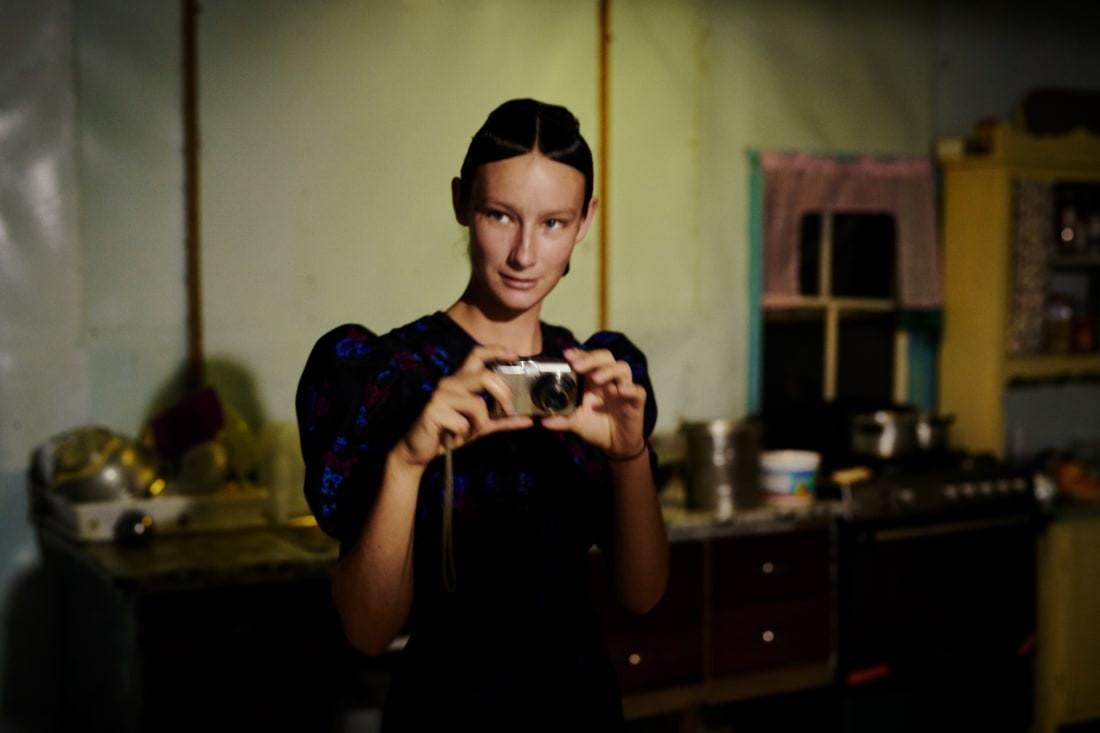 |
| A young woman in traditional clothing points a digital camera towards Michaels' own lens, a photo he described as "one of my favorites from the whole trip." Jake Michaels/Courtesy Setanta Books |
Permitted to run their own schools, Belize's Mennonites have literacy rates significantly lower than the country's other ethnic groups, with just 5% completing formal secondary education. The communities are mostly reliant on commercial agriculture, with colonies organized not only around family and religion, but also labor.
Michaels' photographs detail these economic realities. They depict Mennonites sorting beans in a dimly-lit room or in plastic aprons at a papaya-packing factory. Other images show men attending a nearby auction and smoke rising into a bright blue sky as land is cleared for farming.
"Their world intersects far more now with the modern world than it did before," Michaels said. "There are several Mennonites who work in tandem with Belizean people, so they're aware of the outside world and what's going on.
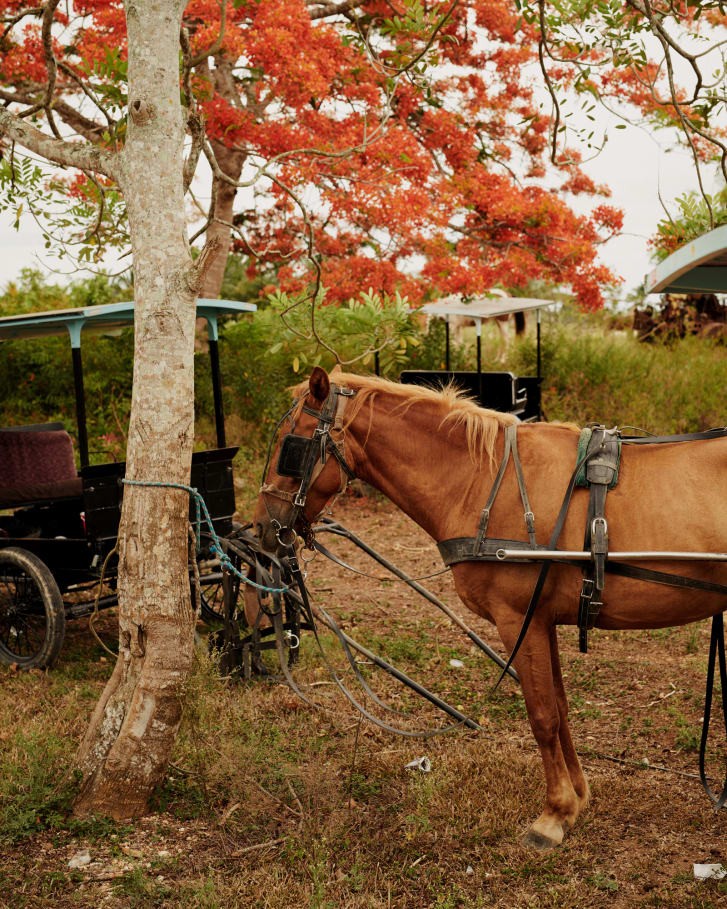 |
| Credit: Jake Michaels/Courtesy Setanta Books |
"There are good aspects to life, and there are hard aspects to life," the photographer added. "At the end of the day, people are still making a living ... people still have jobs. So, I think it was important to show the whole spectrum of life."
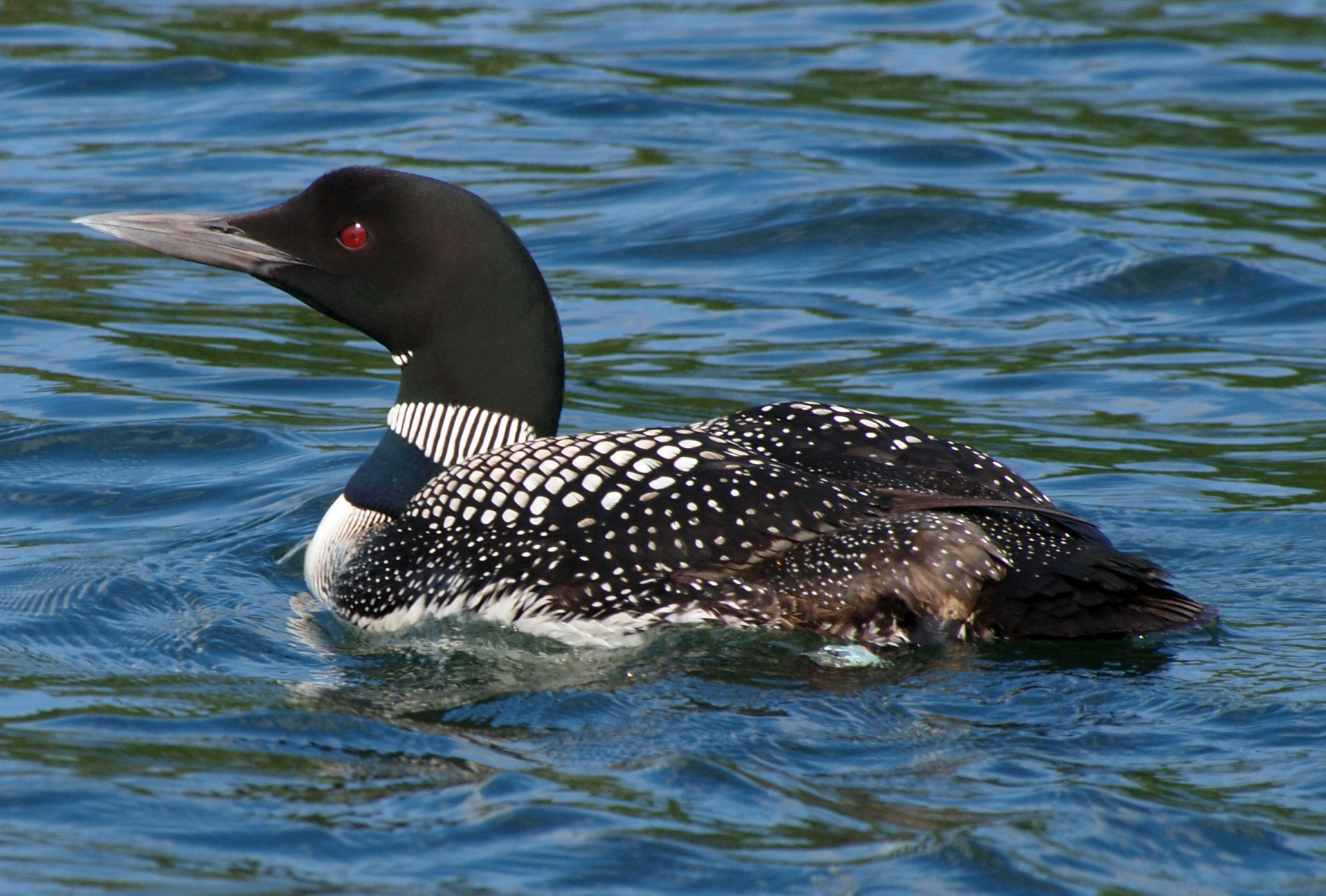 | Top 9 Most Beautiful Birds Appearing In Summer Summer is a great time for many species of birds to appear in the lakes, and tourists to enjoy the wonderful sights of them swimming ... |
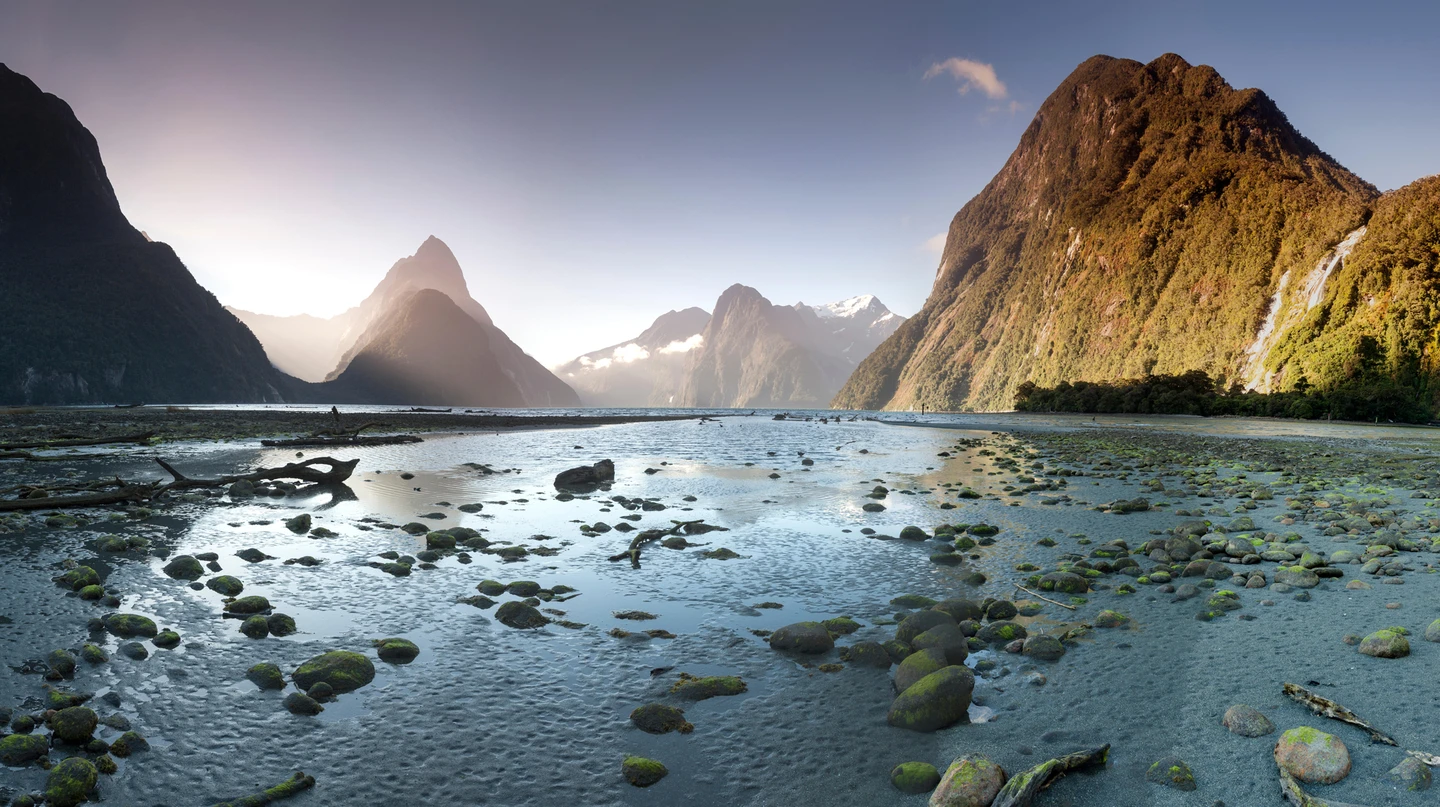 | Top 10 Most Beautiful Places In The World To Discover Beauty exists on ever corner of the map- try to see it all! |
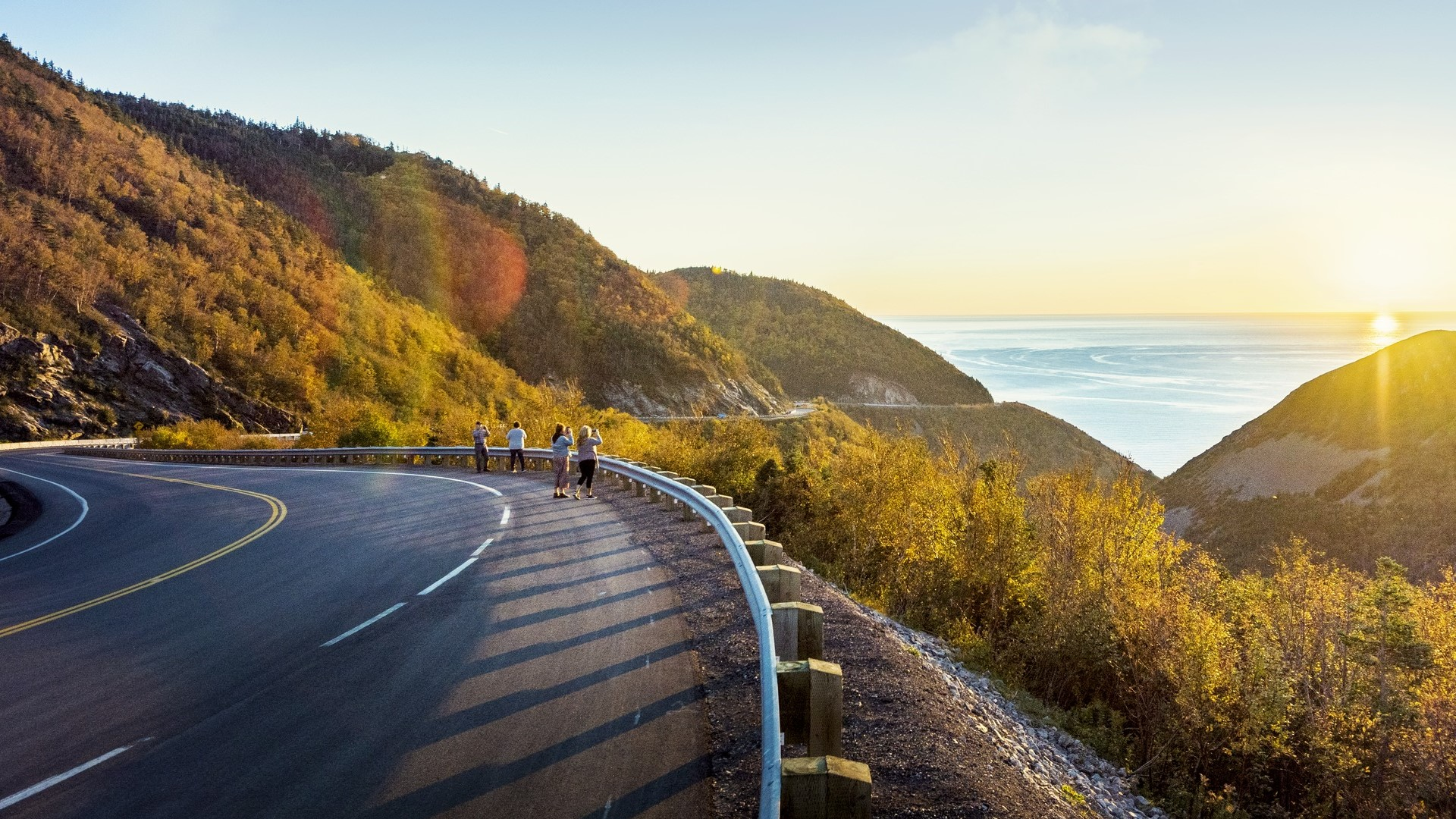 | Top 10 Most Beautiful Roads In The World - Instagram Have you considered visiting multiple places after Covid-19 is over? Here is top 10 most beautiful roads for you to check-in, according to Instagram voters. |
Recommended
 World
World
Pakistan NCRC report explores emerging child rights issues
 World
World
"India has right to defend herself against terror," says German Foreign Minister, endorses Op Sindoor
 World
World
‘We stand with India’: Japan, UAE back New Delhi over its global outreach against terror
 World
World
'Action Was Entirely Justifiable': Former US NSA John Bolton Backs India's Right After Pahalgam Attack
Popular article
 World
World
US, China Conclude Trade Talks with Positive Outcome
 World
World
Nifty, Sensex jumped more than 2% in opening as India-Pakistan tensions ease
 World
World
Easing of US-China Tariffs: Markets React Positively, Experts Remain Cautious
 World
World

